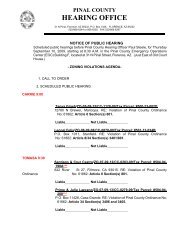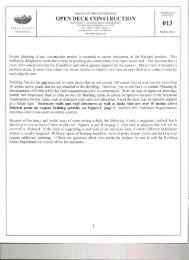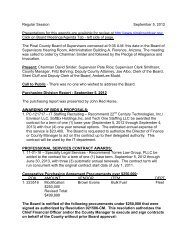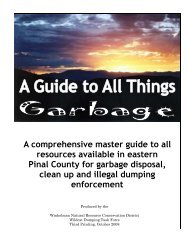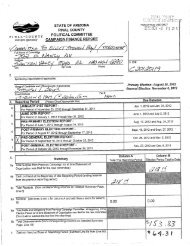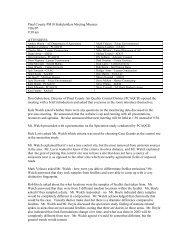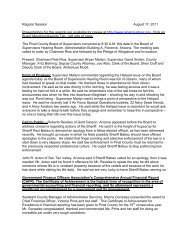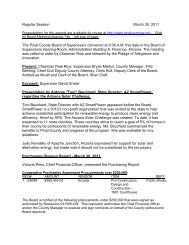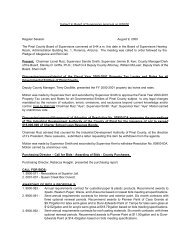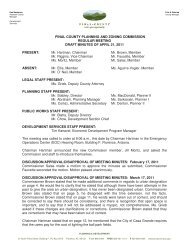Wood Burning Handbook - Pinal County
Wood Burning Handbook - Pinal County
Wood Burning Handbook - Pinal County
Create successful ePaper yourself
Turn your PDF publications into a flip-book with our unique Google optimized e-Paper software.
Fireplaces and Old <strong>Wood</strong>stoves Are Inefficient, Expensive<br />
Heaters!<br />
Why…Because of the Way <strong>Wood</strong> Burns -<br />
As the fire temperature rises, different stages occur:<br />
Stage 2 - Vaporizes <strong>Wood</strong> Gases<br />
Before burning, firewood "cooking" creates<br />
and releases hundreds of new volatile<br />
organic gases, which contain VOCs, tars<br />
and charcoal or carbon. Because the log<br />
temperature at this stage is too low to burn<br />
gases and tars, they escape up the flue.<br />
As they cool, some of the gases will combine<br />
with water vapor to form highly flammable<br />
creosote that sticks to the flue walls; other<br />
gases condense into smoke particles.<br />
-1000<br />
-600<br />
Stage 1 – Water Boils Off<br />
As the log heats, moisture contained in the log vaporizes,<br />
and escapes through the log's surface as water vapor.<br />
More energy is used up vaporizing the moisture<br />
than is used to burn the log. That heat energy could be<br />
warming your house instead of drying your wood before<br />
it burns.<br />
Stage 3 - Log Charcoal Burns<br />
At temperatures above 600 degrees Fahrenheit the escaping gases<br />
start burning, ignited by nearby flames. As the temperature reaches<br />
1000 degrees, the log charcoal burns and emits heat. <strong>Burning</strong> the<br />
charcoal produces most of the fire's usable heat.<br />
As you can see, most of your investment in wood goes up in smoke.<br />
This is an expensive way to produce a little heat!<br />
5





